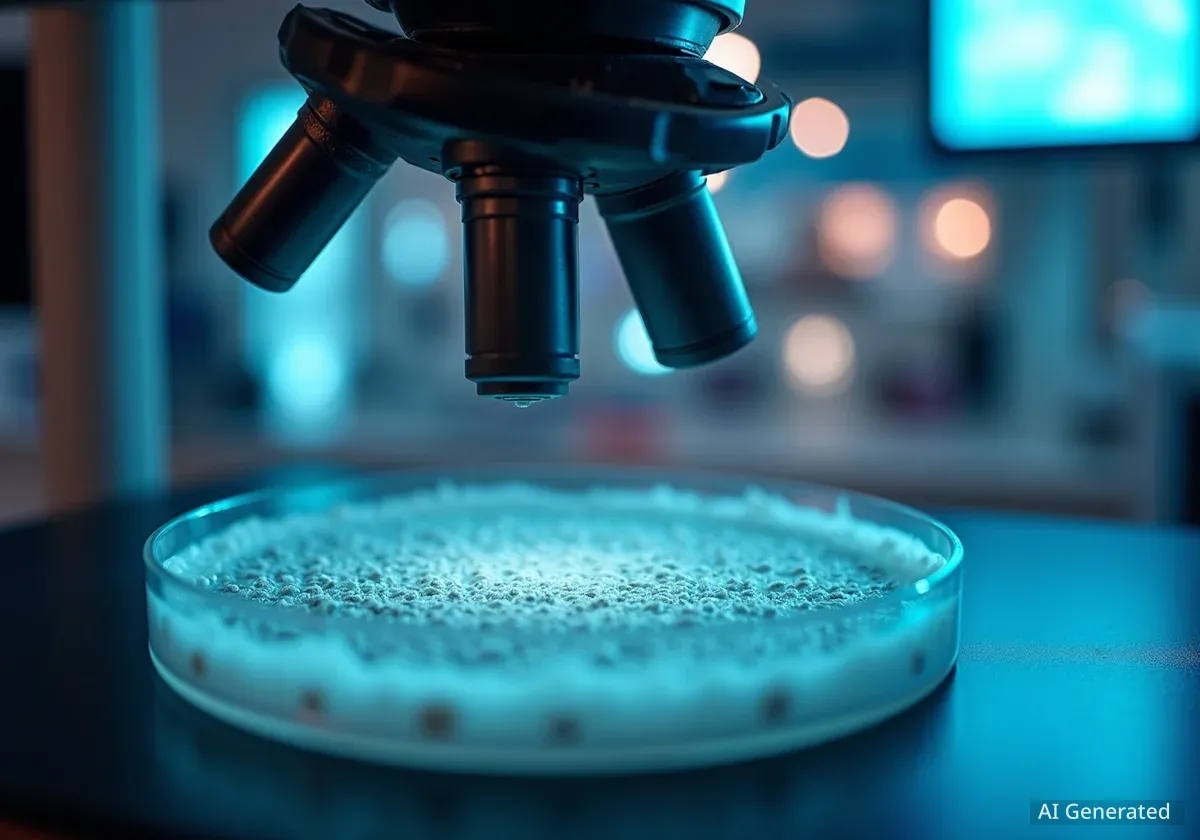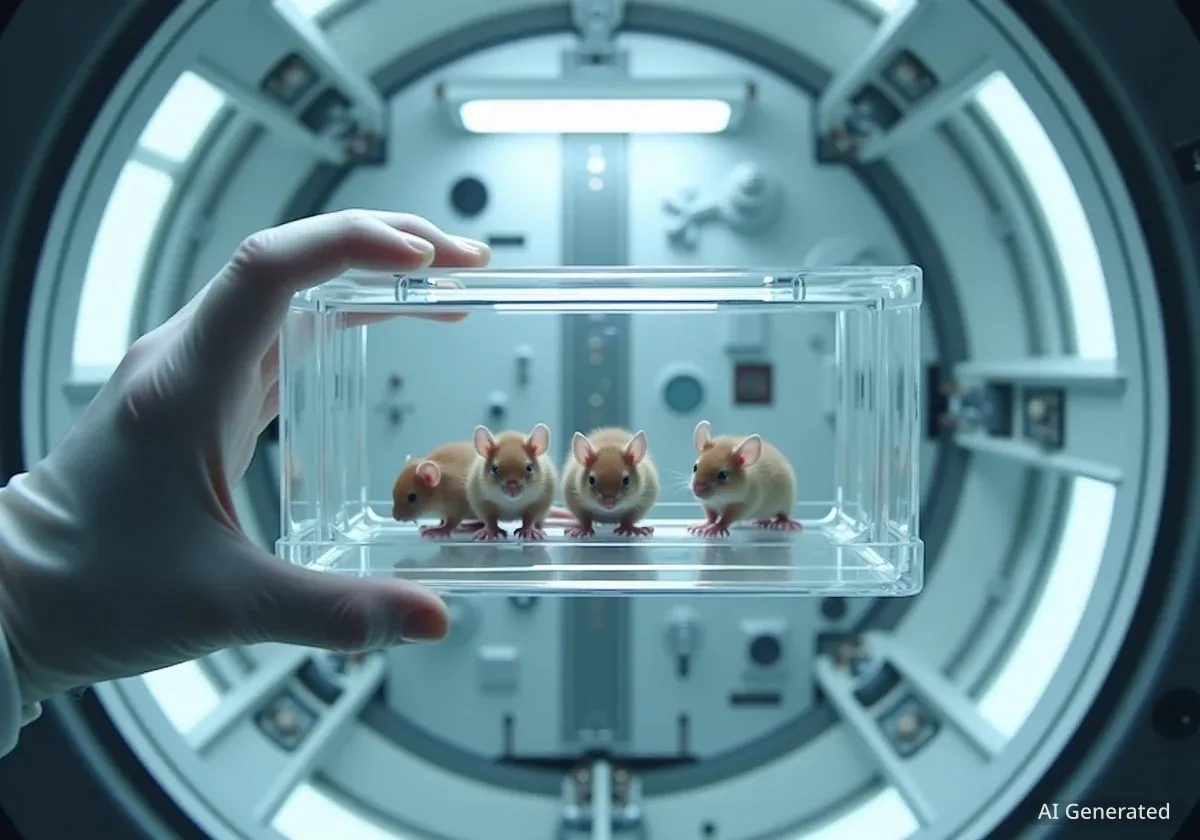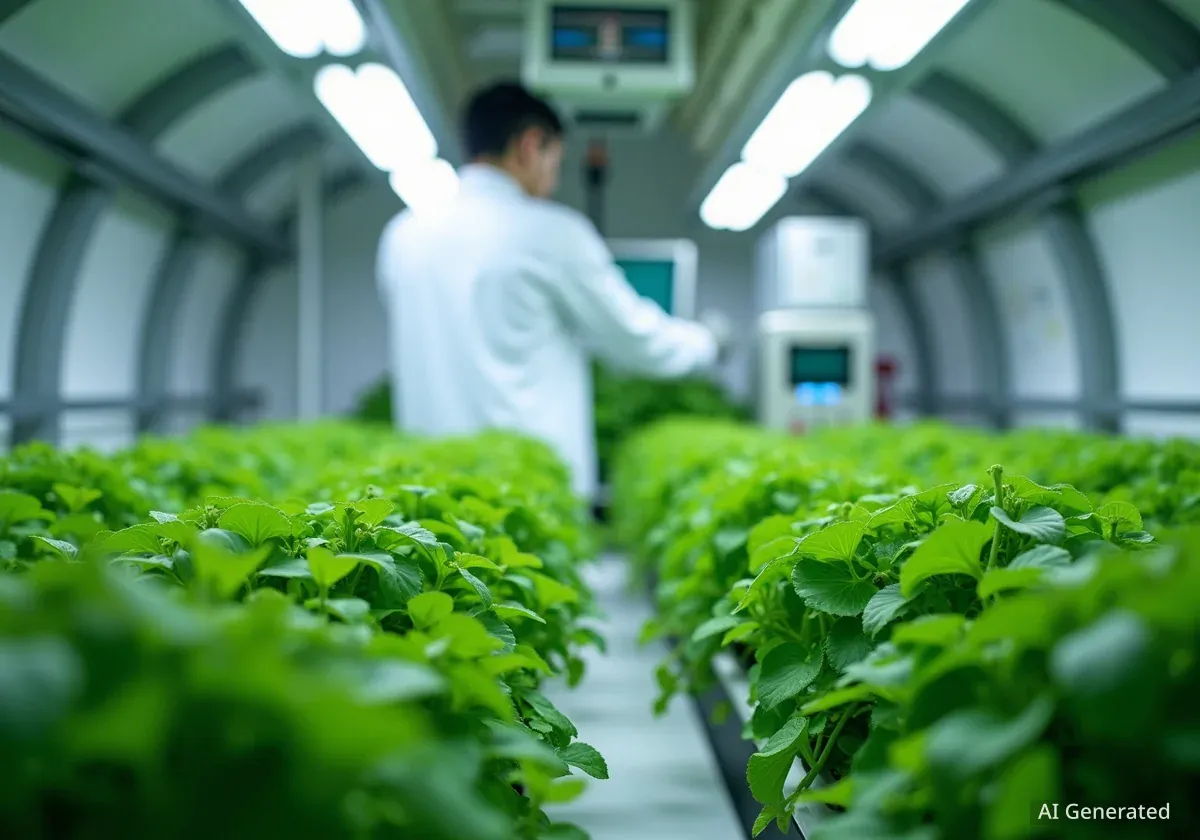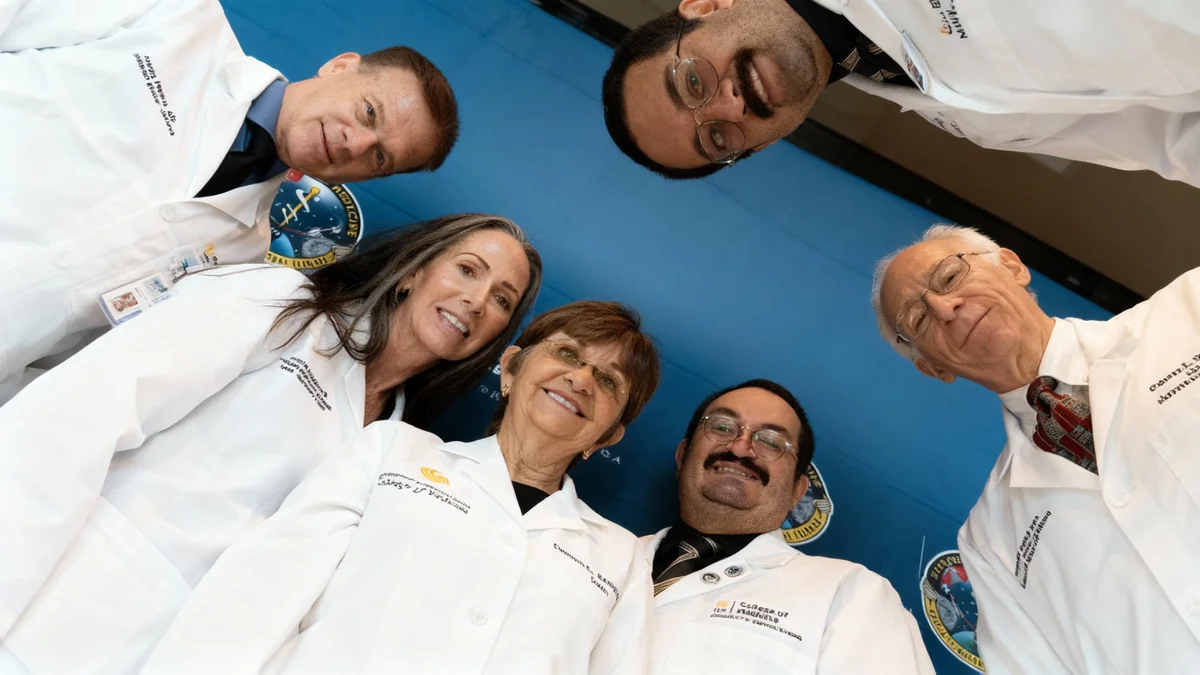A new study has shown that Bacillus subtilis, a microbe essential for human health, can survive the extreme physical forces of a rocket launch and atmospheric reentry. This finding is a significant step forward in planning for long-duration human space missions, including travel to Mars, where maintaining astronaut health is a primary challenge.
Key Takeaways
- Spores of the beneficial bacterium Bacillus subtilis were launched on a rocket to test their resilience.
- The microbes endured extreme acceleration up to 13g and deceleration forces reaching 30g during the flight.
- After returning to Earth, the bacteria showed no damage and grew normally, demonstrating their ability to withstand the physical stresses of space travel.
- This research is crucial for developing life support systems to protect astronaut health on future missions to Mars and beyond.
The Challenge of Long-Duration Spaceflight
As space agencies plan for crewed missions to Mars, one of the most significant hurdles is not the technology of travel but the biology of the travelers. A journey to Mars could take years, isolating astronauts from Earth's medical support systems. During this time, maintaining their health is paramount.
Human bodies rely on a complex ecosystem of microorganisms, known as the microbiome, to function correctly. These bacteria play vital roles in digestion, immune response, and overall wellness. Ensuring these beneficial microbes can travel with astronauts and remain viable is essential for mission success.
Why Microbes Matter in Space
On Earth, our bodies are in constant balance with trillions of microbes. In the isolated and sterile environment of a spacecraft, this balance can be disrupted. For long missions, astronauts will need to rely on their internal microbiome to stay healthy, making the survival of key bacteria a critical area of research.
A Rigorous Real-World Test
To address this challenge, a team of researchers conducted what is believed to be the first real-world test of a beneficial bacterium under actual spaceflight conditions. Previous studies have relied on laboratory simulations, which cannot fully replicate the combined stresses of a real mission.
The microbe selected for the experiment was Bacillus subtilis. This bacterium is known for its hardiness and its important functions in the human body, including aiding digestion and supporting the immune system. Researchers chose it as a benchmark; if it could not survive, more fragile microbes would have little chance.
The Flight Profile
Spores of the bacteria were placed in custom 3D-printed holders and launched on a rocket from a site in Sweden. The mission was designed to simulate the intense physical forces an organism would experience during a trip to space and back.
- Launch Acceleration: The rocket subjected the bacteria to forces of approximately 13g, or 13 times the force of Earth's gravity.
- Microgravity: After reaching an altitude of around 160 miles (about 257 kilometers), the payload experienced weightlessness for over six minutes.
- Reentry Deceleration: During its return to Earth, the capsule slammed into forces of 30g while spinning at about 220 times per second.
Understanding G-Force
A force of 13g means an object feels 13 times heavier than it does on Earth. The 30g experienced during reentry is an immense physical stress, far beyond what humans can typically withstand without specialized training and equipment.
Successful Survival and Future Implications
After the payload was safely recovered, scientists at RMIT University in Australia examined the bacterial spores. Using powerful microscopes and analytical tools, they found that the microbes were not only intact but thriving. There was no observable damage, and their growth patterns were unchanged, as if they had never left the lab.
"Our research showed an important type of bacteria for our health can withstand rapid gravity changes, acceleration, and deacceleration," explained study co-author Distinguished Professor Elena Ivanova from RMIT University.
This successful test provides crucial data for engineers and scientists designing the next generation of life support systems for spacecraft. Knowing that key microbes can survive the journey allows for the development of systems that can maintain a healthy microbiome for astronauts during years-long missions.
Broader Scientific Benefits
The findings extend beyond astronaut health. According to Professor Ivanova, the research has potential applications on Earth. "They include developing new antibacterial treatments and enhancing our ability to combat antibiotic-resistant bacteria," she said.
Understanding how bacteria survive extreme pressure could lead to new methods for fighting diseases in environments where microbes are typically difficult to eliminate. The data also opens doors for pharmaceutical companies to conduct novel life science experiments in microgravity.
A Collaborative International Effort
The study was a joint project involving several organizations. It was led by RMIT University in collaboration with the space technology company ResearchSat and the drug delivery firm Numedico Technologies. The rocket launch was managed by the Swedish Space Corporation, highlighting the international nature of modern space research.
Paving the Way for Mars and Astrobiology
The resilience of Bacillus subtilis is good news for future Mars colonists, but it also has implications for the search for life beyond Earth. Associate Professor Gail Iles, another co-author from RMIT, noted that the work "enhances our understanding of how life can endure harsh conditions."
This knowledge can inform astrobiology missions by expanding the range of environments where scientists might look for extraterrestrial life. If microbes from Earth can withstand such violent conditions, it suggests that life could potentially survive in places previously considered too hostile.
"Microbes play essential roles in sustaining human health and environmental sustainability," Iles added, emphasizing their importance for any long-term, self-sufficient human presence off-world. By confirming that these microscopic partners can make the trip, this research brings humanity one small but vital step closer to becoming an interplanetary species. The full study was published in the scientific journal npj Microgravity.





